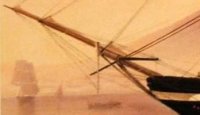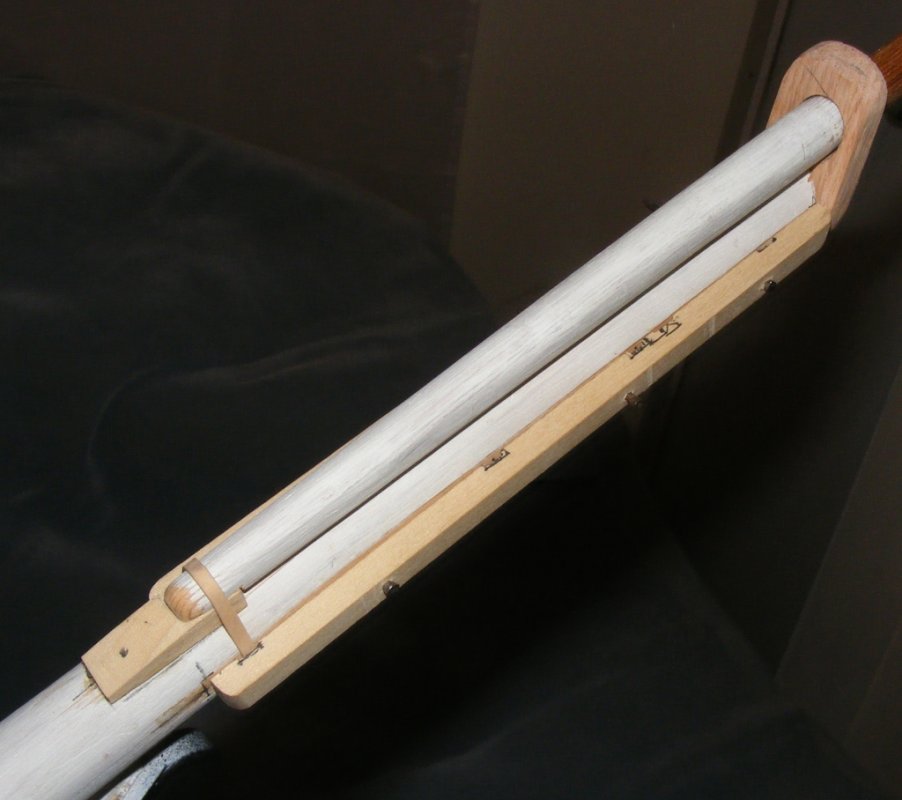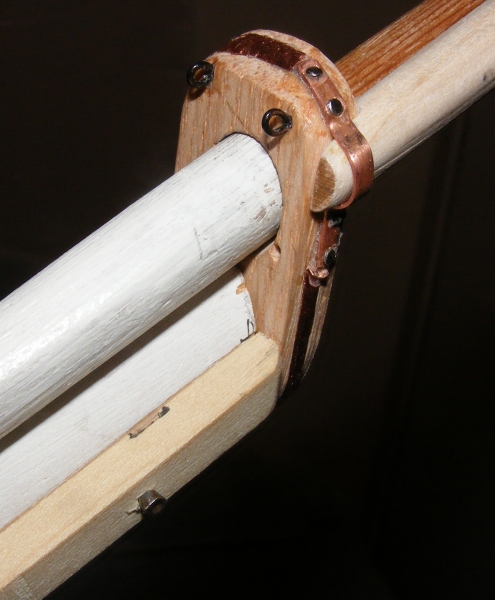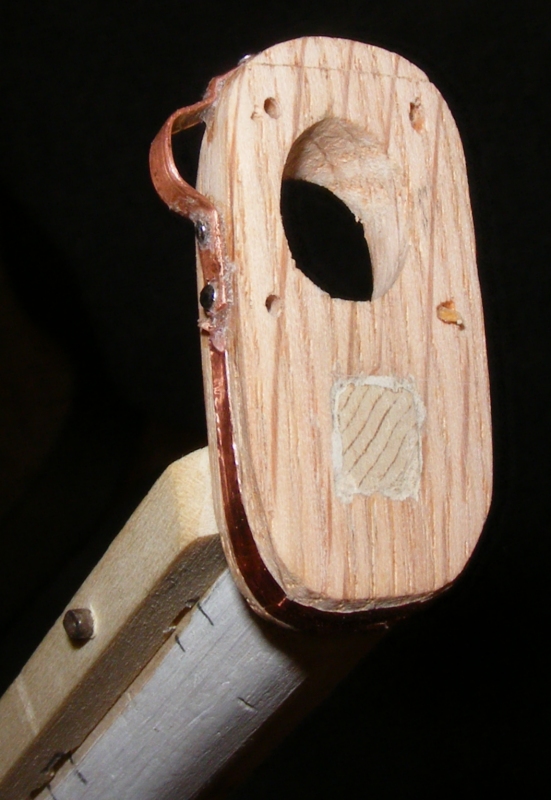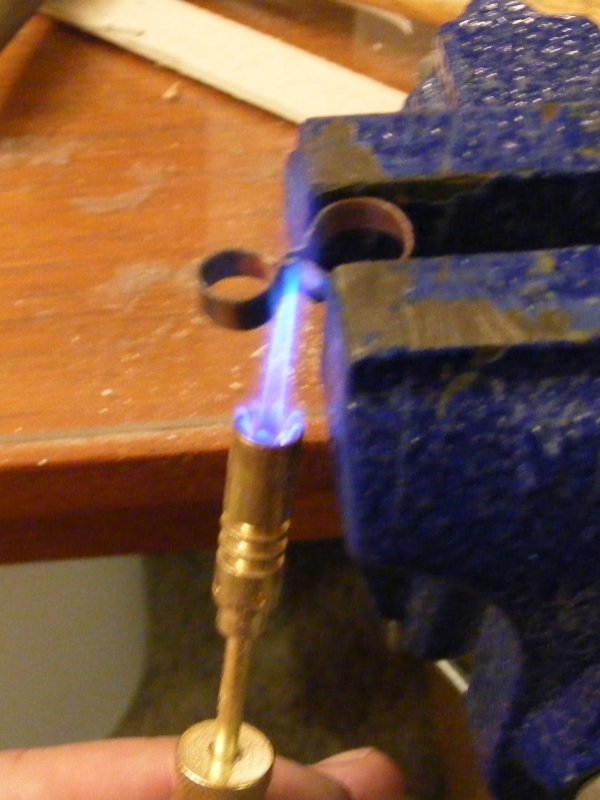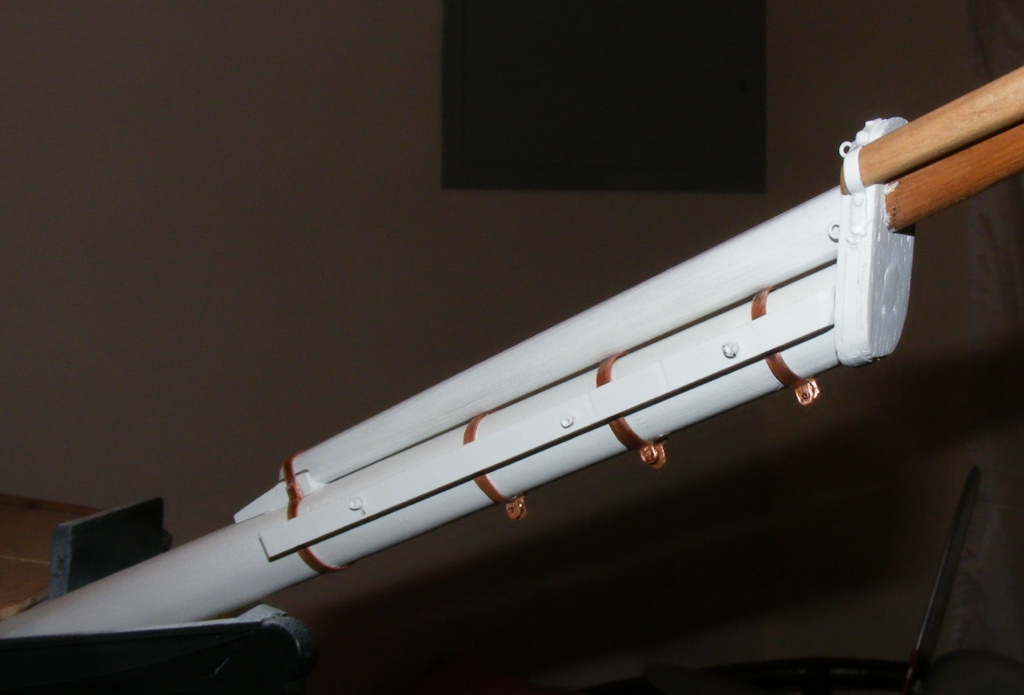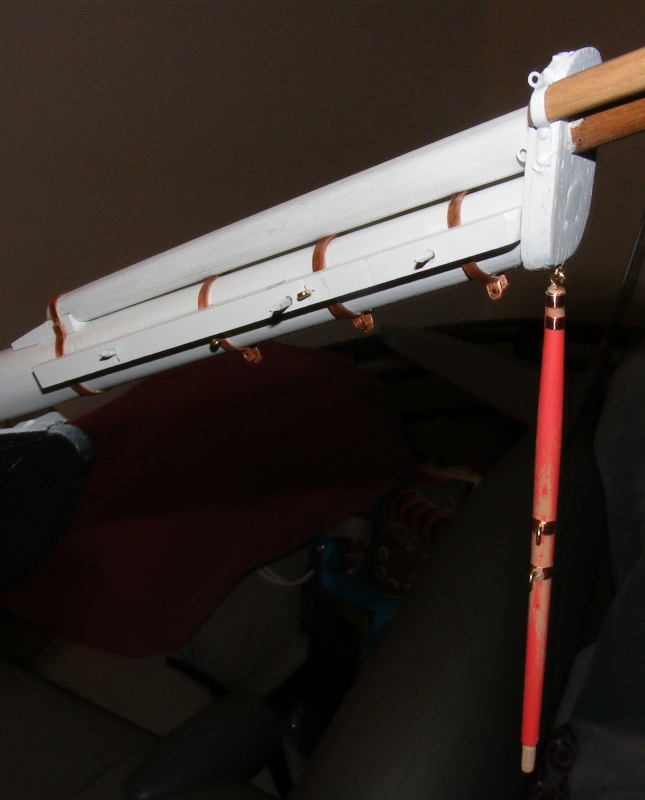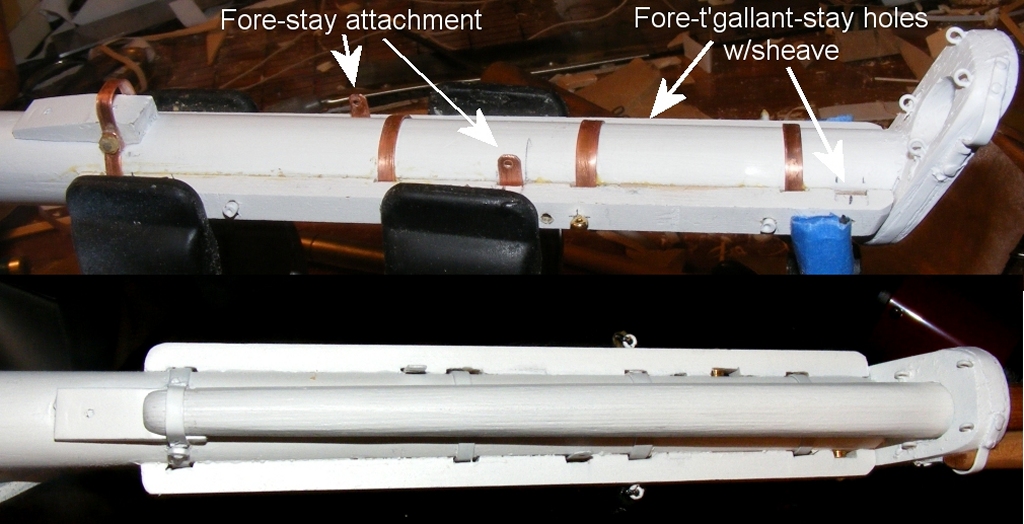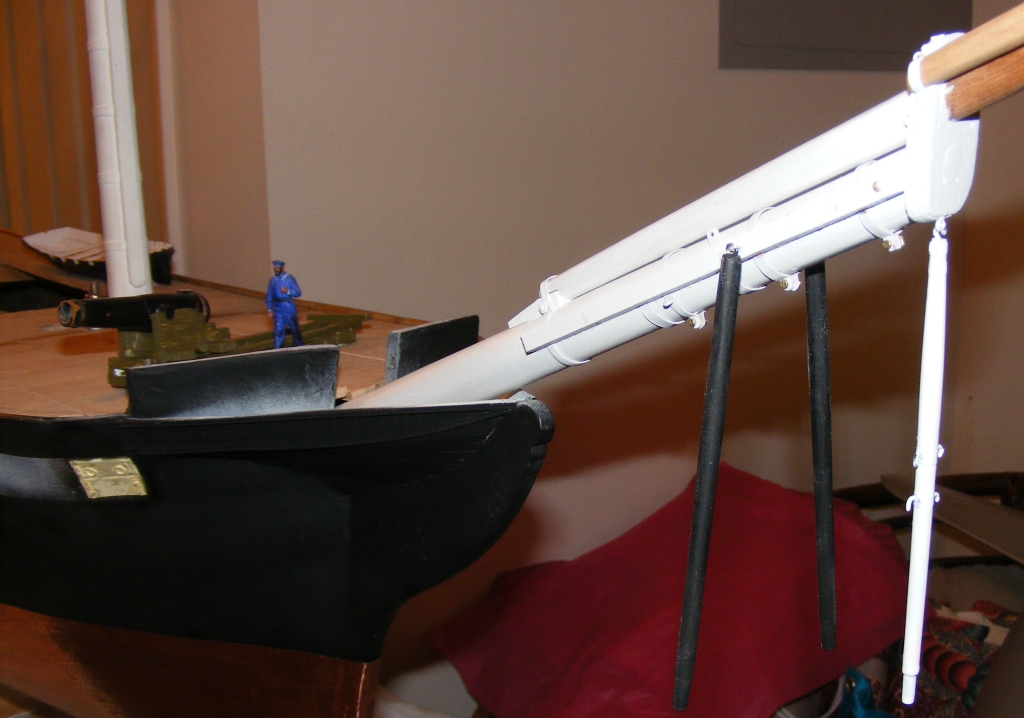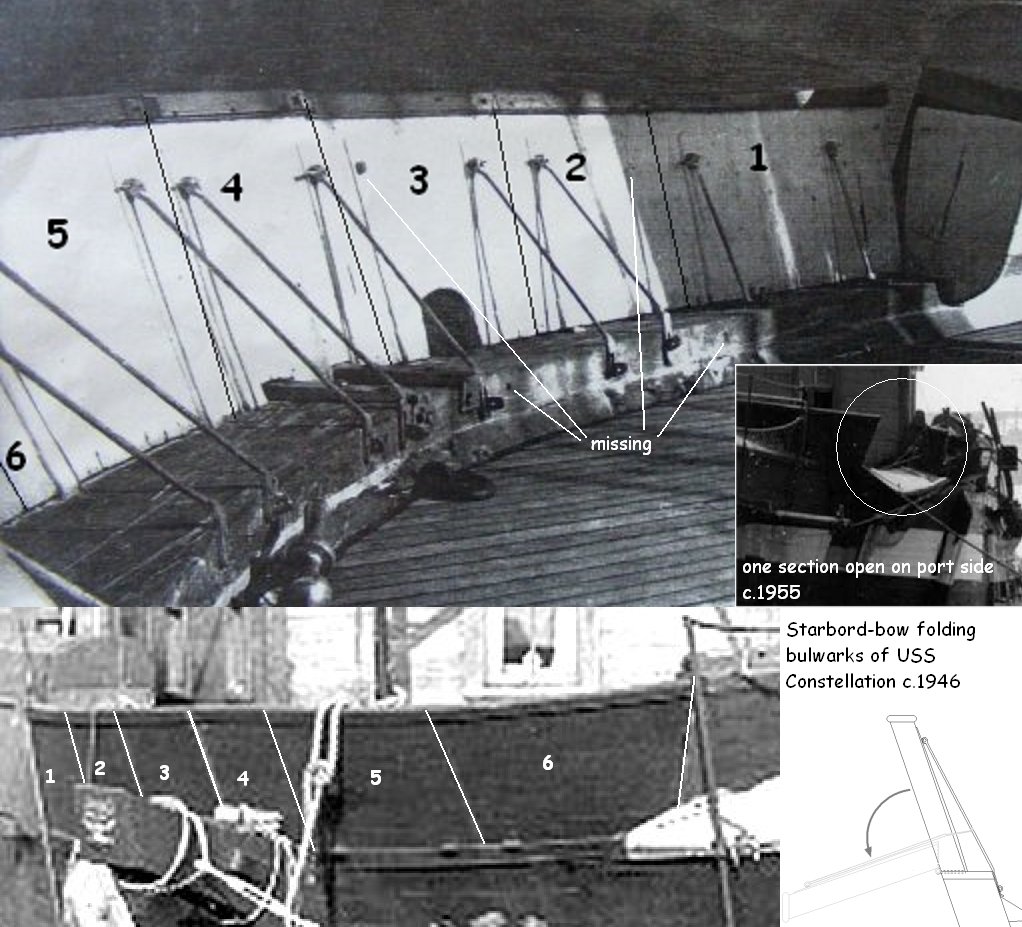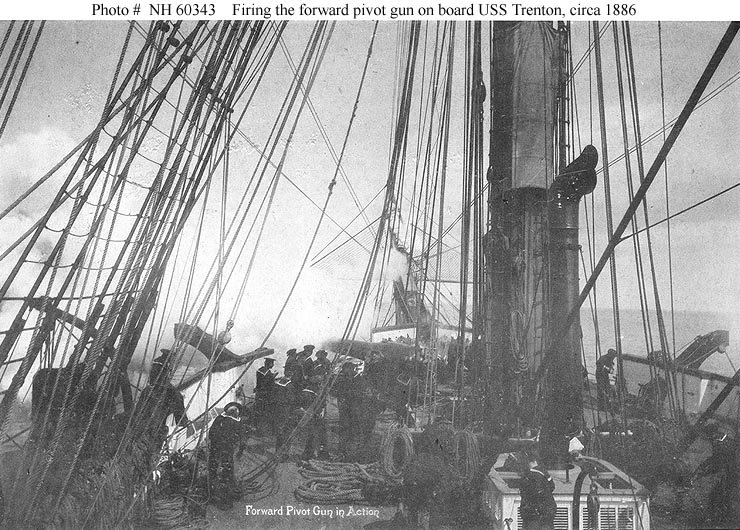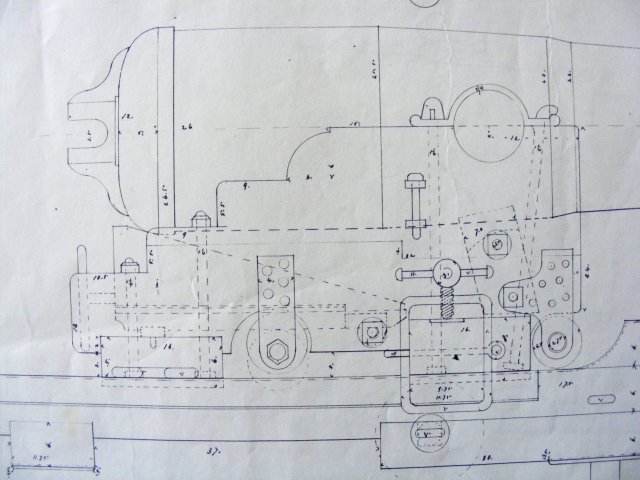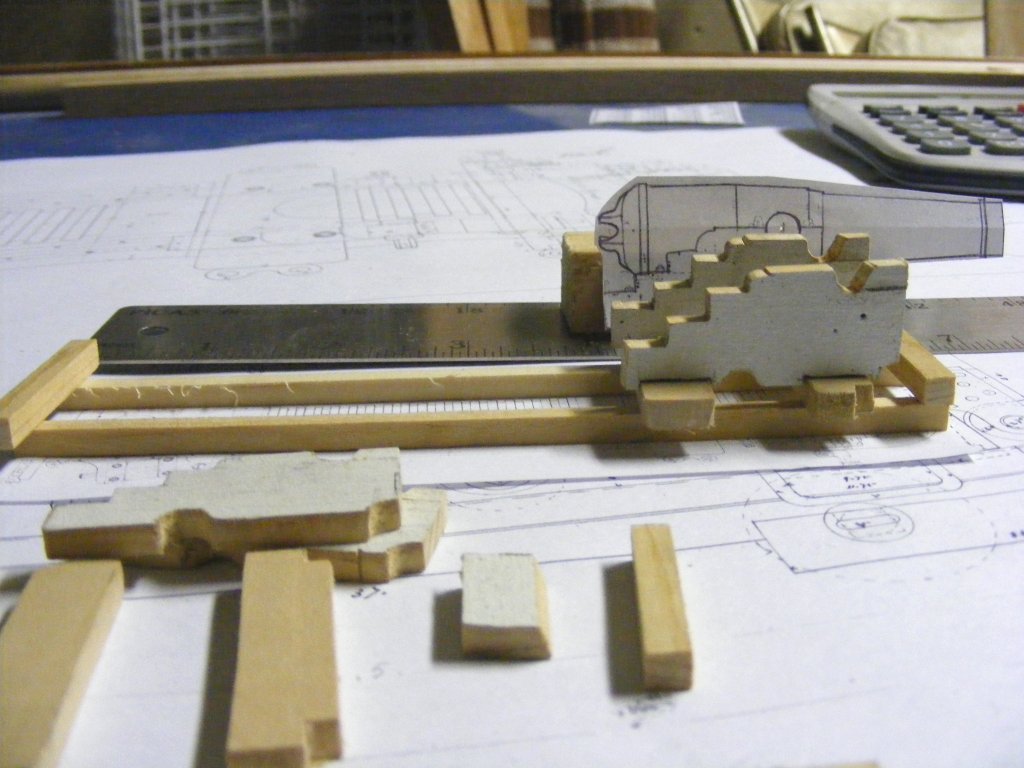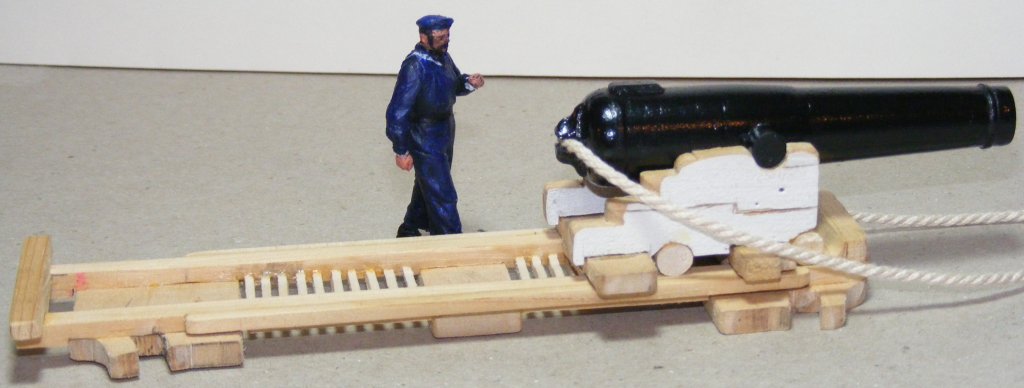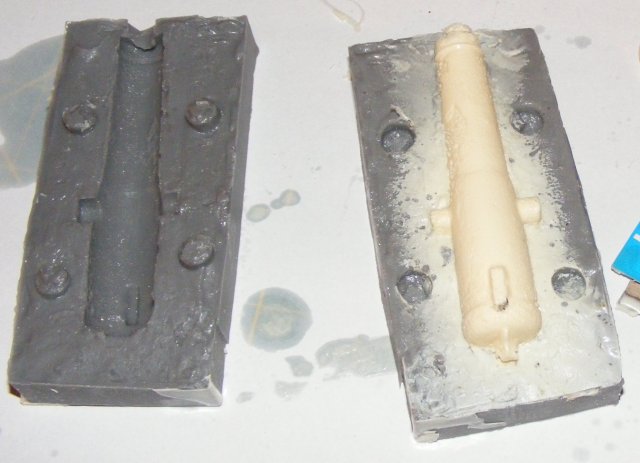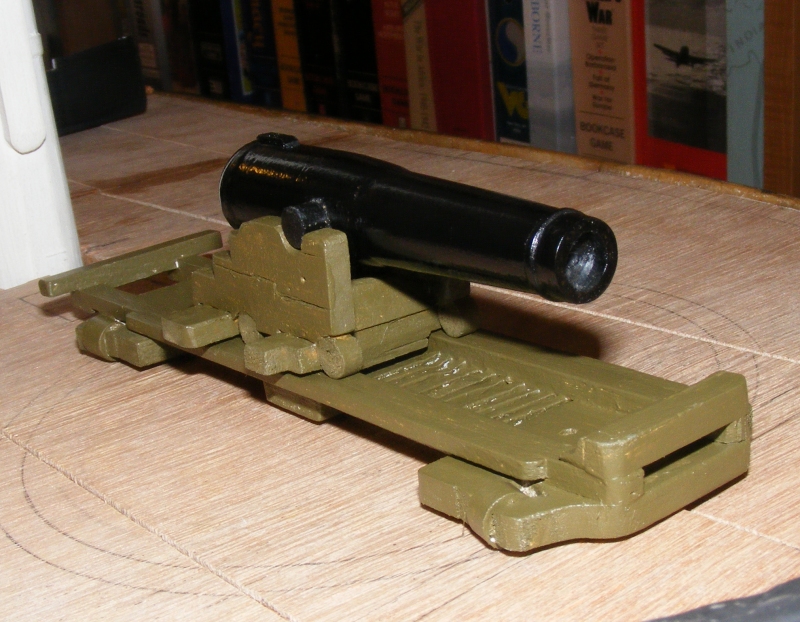









7/30/2011

 |
 |
|
Previous Page | Next Page | Table of Contents click pictures for a larger version When I was sailing, the bowsprit was my favorite hangout. Out on the tip, with the ship unseen behind you, it's like flying. On a sailing model it's fragile and exposed, a upstart youth poking around and getting into trouble. My goal was to make Constellation's bowsprit as accurately as I could while also making it able to withstand getting bumped around a bit. On with the detective hat once more! That I know of, Constellation was painted by deSimone in 1856 and 1862, possibly by Roux in 1856, and the earliest photo of her was taken on the Severn River in 1871. Looking closely at her bowsprit in each of these images, it's hard to find anything in agreement (the story of my life with this boat). In the paintings, besides discrepancies, there are missing details - de Simone left out all the deadeyes on the starboard side topmast shrouds, for instance. So I look at these allowing for some "artistic license." I basically opted to go with the 1871 photo as the most definite arrangement of her bowsprit rigging mainly because it more closely resembles the 1854 spar and sail plan, notably in the separation of the fore-stays and fore-topmast-stays (all of which is, of course, different than how she's set up today). First I made the heel block for the jib-boom and notched the jib boom. Then I began making the "bees" which on Constellation run from the cap right back to the billet. A new bowsprit cap was made from red oak. I tried to make it from aircraft ply like the mast caps, but I just couldn't get the holes drilled right without the plys separating. The cap got a copper band, eyebolts, and a loop where the notched flying-jib-boom seats. The jib-boom and flying-jib-boom are connected by what one masting source called a "wythe", so I made one of these from copper sheet. A bit of paint, then added three bands that the bob-stays will connect to. These have a nut and bolt at the bottom and are held in place by notches in the bees. Another band reinforces the jib-boom heel block and also has a nut and bolt through both bands and the block. Eyes were added for the spreaders and the bowsprit shrouds and a dolphin striker was made from a maple paint brush handle. Two partial bands make the forestay attachment points. Copper nails on either side, hidden under the bees, hold them in place. The bees aren't permanently attached yet, but are held on with 3 4p finishing nail 'pins." They're notch to accommodate all the bandings and for two brass sheaves where the fore-topmast-stays will pass through. With everything in place, the bees are glued on and the 4p nails are glued in to reinforce them against all the stays pulling every which way. Sheaves are placed in the fore-topmast-stay holes and held by brass escutcheon nails. The spreaders are made from maple and everything gets painted. The 1854 sail plan and de Simone show the dolphin striker hanging from the cap, while the others show it under the bowsprit behind the cap - I opted to follow the sail plan. Great Guns! Constellation was a warship, and as such she carried guns - 22 of them in 1856. 18 of them on the gundeck were 8" shell guns, 4 them, also on the gundeck, where 68 pounder smoothbores. The remaining 2 were 10" shell guns mounted on pivot carriages on the spar deck - one in the bow, one in the stern. The bulwarks where these guns were mounted were sectioned and could be lowered or removed to allow the gun an unobstructed field of fire. As explained previously, I'm not modeling the gundeck, so I don't have to worry about making those 20 guns, but the two on the spar deck are pretty obvious. During a visit to the ship's manager, Paul Powichroski, he showed me the original bronze hinges for the folding bulwarks, gave me some bits of live oak from the ship, and showed me the drawings for the ships pivot mounted Parrot rifles she carried during the Civil War. In researching her pivot guns they also had the drawings for the 10" shell guns and carriages as mounted on the USS Mississippi. Subsequently I went to the National Archives and acquired a set of these drawings for myself. The Mississippi's guns were designed only for a front pivot. There are no trucks at the front or provision for pivoting on the center. To make a carriage that would center pivot, I mirrored the rear end of the slide in place of the front end making pivot points front, center, and rear - much like the Civil War era version of these carriages were set-up. The gun was turned by Dan Lewandowski and further detailed by me. I made a rubber mold from it and cast one in resin, but there were too many air bubbles in the rubber and it didn't turn out well. There's still hardware to make for these guns, rings, iron plates, cap-squares, gears, pins, compression bars, etc much of which will probably be cut from the copper tape. |
||
 |
 |

